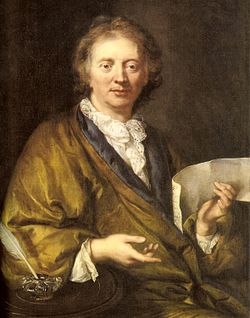|
|
|
Review:
| Four years ago I reviewed Hespêrion XX's stylish recording of Les nations of Francois Couperin, although the Kuijkens had recorded them, apparently for the first time, several years before that. Only now are players on modern instruments turning to record these pieces, and with interesting results. They are delicately poised works, elegantly crafted. The initiated will place them squarely in the French tradition and take pleasure in their many Italianate qualities. Exceptional for the time in France, the music was issued not in score but rather in four beautifully The European Baroque Soloists are indeed an international ensemble, whose continuo players come from even further afield than their name suggests (the bassoonist is Yugoslav and the harpsichordist American), and their modern style playing is of the highest order. Three are members of the Berlin Philharmonic Orchestra and one of the Vienna Philharmonic; Turkovie, the bassoonist, plays with the Concentus Musicus. The ordres were recorded in two sessions, the second of which was not so well caught by the engineers (favoring the lower instruments over the higher). In the earlier, period-styled performances, strings and wind are combined and contrasted (especially effective in the Hespérion XX Astree recording), one movement to the next, particularly in the dances, in the French manner of the late seventeenth and early eighteenth centuries. Couperin allowed for a wide spectrum of realization by labelling the partbooks premier dessus, etc., and so the European Baroque Soloists are perfectly justified in performing Les nations with flute, oboe, bassoon and continuo—although the violone has frequently to drop out altogether to lighten the texture. In the earlier recordings, the continuo part is not doubled, because very often Couperin's basse d'archet part functions in that way, when not given independent, melodic lines or elaborations on the fundamental bass. The violone (or double-bass viola da gamba) was not in fact used as a chamber music instrument in France and joined the Opêra orchestra only at the beginning of the eighteenth century. These, then, are modern performances, by players—technically proficient though they be— relatively unschooled in French baroque performing practices. They reveal little awareness of the subtle cross-rhythms of the Courantes, the delicate third-beat resolutions in the Sarabandes and the vitality of the quicker dances. The gestures and gravitas of French rhetoric—and in particular the dramatic power of suspensions and unwritten (but nevertheless essential) silence—are sadly missing from the slow movements of the sonatas. By eschewing the affective en* (or swell) and the leavening quality of inagalite (probably because it is not actually notated), they have deprived the music of its grace. Accordingly, many movements suffer from squareness and a lack of forward motion. Fidelity to the contemporary printed page is only part of reconstructing a piece of French baroque chamber music, and that is why most modern players choose not to play this repertory. Performing practices aside, these performances, however perfectly in tune and together, lack the sense of joie de vivre that I believe exists in the music. J.A.S. |
flac, cover |


No comments:
Post a Comment